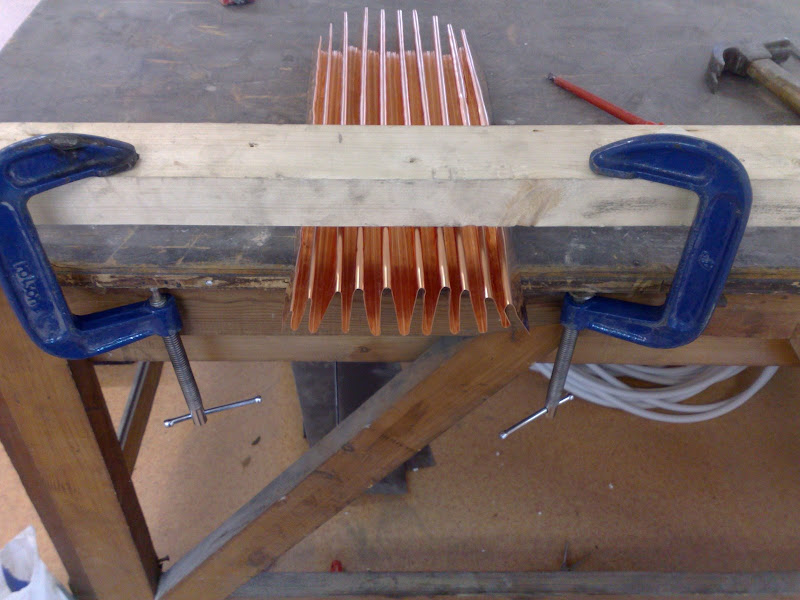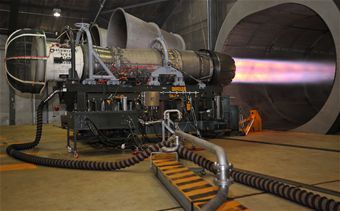http://www.freepatentsonline.com/6657862.pdf

This goes great with my current maturing brainchild.

It also mimics OPS's OSS stator screw method of reversing flow direction and adding linear lenght by twisting the airflow.


JFettig wrote:The cooling effect of the exhaust gasses by a suppressor via convection heat transfer is negligible.
JFettif: DoD studies show a 6dB Improvement using heatsink.Grounded wrote:One of our original designs sought to cool through a surging and purging effect. The heat sink will go to hell if internal in short time.JFettig wrote:The cooling effect of the exhaust gasses by a suppressor via convection heat transfer is negligible.
Can you please post a link to the DoD study?whiterussian1974 wrote:JFettif: DoD studies show a 6dB Improvement using heatsink.Grounded wrote:One of our original designs sought to cool through a surging and purging effect. The heat sink will go to hell if internal in short time.JFettig wrote:The cooling effect of the exhaust gasses by a suppressor via convection heat transfer is negligible.
Only 6-12 fins depending upon relative IDvsOD though, otherwise they will fill w junk like DrK said in a previous post.
And I wouldn't use it w a dirt round like .22lr or .300BLK w short barrel. Unburned Powder fouling can be a B.
PS: The OPS OSS uses this spiralled heatsink concept as stators to spin the gas mass. Many Threads have mentioned that added surface area is sometimes more effective than added volume.
Just some thoughts for your beautiful Sunday Morning.
whiterussian1974 wrote:JFettif: DoD studies show a 6dB Improvement using heatsink.Grounded wrote:One of our original designs sought to cool through a surging and purging effect. The heat sink will go to hell if internal in short time.JFettig wrote:The cooling effect of the exhaust gasses by a suppressor via convection heat transfer is negligible.
Only 6-12 fins depending upon relative IDvsOD though, otherwise they will fill w junk like DrK said in a previous post.
And I wouldn't use it w a dirt round like .22lr or .300BLK w short barrel. Unburned Powder fouling can be a B.
I've already sent you the link 3 seperate times in different threads.Bendersquint wrote: Can you please post a link to the DoD study?
Thank you for the link, I didn't know THAT was the report you were saying it came from.whiterussian1974 wrote:I've already sent you the link 3 seperate times in different threads.Bendersquint wrote: Can you please post a link to the DoD study?
viewtopic.php?f=10&t=123359
Experimentation is fun though expensive in this game. I have often entertained the idea of getting an 07 SOT license just to try design idea's like this and post up results.delta9mda wrote:why do people have to make this harder than it is?
For a slowfire bolt action that only fires 20rds per trip to range, the geometry is more important than conductive metal. Smear li grease in the blast chamber, use only a few spiralled fins to retain volume/avoid fouling and the concept has merit.joe0121 wrote:Experimentation is fun though expensive in this game. I have often entertained the idea of getting an 07 SOT license just to try design idea's like this and post up results.delta9mda wrote:why do people have to make this harder than it is?
I read on a forum one time from a guy who was well known and respected in the internal ballistics world that Cartridge cases with longer necks and steep shoulder angles tend to have longer barrel life when compared to other cartridges using the same amount of powder and bore diameter. The longer neck carried more heat away from the burning gunpowder thus reducing throat erosion. Not saying I buy it all that much.
So maybe even a small amount of cooling early on can carry away enough energy to make a difference. Problem is the metals that are good heat conductors (other than steel) are generally soft and or expensive.

Darn it!Dr.K wrote:Ive thought about the gas spinning spiraling stuff in the past, and what my research concluded was that the gas does not take that motion easily. It is possible, but you'll never get that motion to propagate past the fins, it just turns toward the exit as soon as it passes.
De accuerdo, mi hermano.LavaRed wrote:I've posited for several years now that thermodynamics does a much better job of explaining what happens inside a suppressor than does fluid dynamics. Not to dismiss the importance of baffle geometry or the diversion of gases, but at its core, what a suppressor does is take one form of energy, i.e., sound, and transform it into another, i.e., heat.
This is called stagnation. This adds a time variable to the equation. (P*V*T)/t=kLavaRed wrote:Now, having said that, we can deduce that what baffle geometry and diverting the gases away from the bore-stream does is to delay their exit, such that they have a longer time to allow their sound and kinetic energy to be transformed...
Es un gusto y un placer poder contribuir!whiterussian1974 wrote:De accuerdo, mi hermano.LavaRed wrote:I've posited for several years now that thermodynamics does a much better job of explaining what happens inside a suppressor than does fluid dynamics. Not to dismiss the importance of baffle geometry or the diversion of gases, but at its core, what a suppressor does is take one form of energy, i.e., sound, and transform it into another, i.e., heat.
I want noone to think that I am contradicting or correcting LavaRed.
I WOULD like to AMPLIFY a point to avoid confusion.
P,V,T are bound together in Ideal Gas Laws. As V is increased, T*P concurrently drop. So, Temp is best transformed during the earliest possible stage where the gradient is highest.
Many people believe that sound is inherant to propellent discharge. However, accoustic energy is only .25-1.0% of energy just prior to bullet exit. It's the rapid CHANGE in pressure that causes the generation of the sound impulse in atmosphere. This rapid compression results in precursor wave, muzzle blast, etc.
This is called stagnation. This adds a time variable to the equation. (P*V*T)/t=kLavaRed wrote:Now, having said that, we can deduce that what baffle geometry and diverting the gases away from the bore-stream does is to delay their exit, such that they have a longer time to allow their sound and kinetic energy to be transformed...
So, any increase to t is inversely proportional to delta(k).
Too bad that this site doesn't link the studies in viewtopic.php?f=10&t=123359 to a FAQs section.
A thourough grounding in multi-disciplinary elements is needed to advance "Systems" theories so that increasing value in 1 field, doesn't harm another.
Muchas Gracias por su contribución a cualidad, Amigo.
Gents,whiterussian1974 wrote: P,V,T are bound together in Ideal Gas Laws. As V is increased, T*P concurrently drop. So, Temp is best transformed during the earliest possible stage where the gradient is highest.
Many people believe that sound is inherant to propellent discharge. However, accoustic energy is only .25-1.0% of energy just prior to bullet exit. It's the rapid CHANGE in pressure that causes the generation of the sound impulse in atmosphere. This rapid compression results in precursor wave, muzzle blast, etc.
Now, having said that, we can deduce that what baffle geometry and diverting the gases away from the bore-stream does is to delay their exit, such that they have a longer time to allow their sound and kinetic energy to be transformed...his is called stagnation.
This adds a time variable to the equation. (P*V*T)/t=k
So, any increase to t is inversely proportional to delta(k).
A thourough grounding in multi-disciplinary elements is needed to advance "Systems" theories so that increasing value in 1 field, doesn't harm another.
Gunny, Historian asked me a similar ? about my goal in design/performance goals.gunny50 wrote:So if we keep working this we might be able to make calculations related to Caliber - Barrel length / silencer length and weapons type. As so called gas-guns will behave different / silencers will behave different between Gas-guns and bold actions. Due to back pressure increase and ejection port blowout etc eye. Not to forget powder type, burnrate etc.whiterussian1974 wrote: A thourough grounding in multi-disciplinary elements is needed to advance "Systems" theories so that increasing value in 1 field, doesn't harm another.
Question is what does the User want, small, quiet? what weapons is used.
Gunny
Yes, increasing stagnation, which is my ultimate goal. Unless you've read my 1 way valve thread and others, it's difficult to get inside my head.Baffled wrote:But if we pursue the surface area angle to the extreme, we will be back to stuffing out cans with chore-boy scrubbies.
yes surface area absorbs thermal energy, but its primary role is gas flow disruption; slowing of the propellant gases.

Sure you're an engineer, just perhaps not by formal training. Don't sell yourself short.Capt. Link. wrote:Love the conversation but the idea of adsorbing the heat through convection dose not work well in real life.
I'm not a engineer but the surface area required to adsorb heat to lower pressure for the few usec it takes for the gas to escape is enormous.
I go along with this . . .Capt. Link. wrote:Love the conversation but the idea of adsorbing the heat through convection dose not work well in real life.
I'm not a engineer but the surface area required to adsorb heat to lower pressure for the few usec it takes for the gas to escape is enormous.
The best of the WWII through 1960's trials was 24db and most of that was due to turbulence caused by the mesh and increased dwell time of the gases.
Today's cans are champions at retaining gas and releasing it in a regulated fashion allowing the gas to cool and expand lowering pressure.The heat transfer is next to nothing as mass is not available.
If you doubt me do the math and a simple scientific test.Take the can of your choice and place a temperature probe under a layer of insulation next to the can and take one shot.You can figure out the calories adsorbed through convection.Then figure out how much that will lower the SPL of that can, best have a calculator with lots of spaces behind the decimal point.You can do the same test if you have a mesh packed suppressor to prove the dwell time.
My point is convection is impractical unless the gasses are exposed to a huge volume of heat conductive material and you don't mind a huge suppressor.Dwell time will trump it every time or you may end up with Gunny's oil drum.